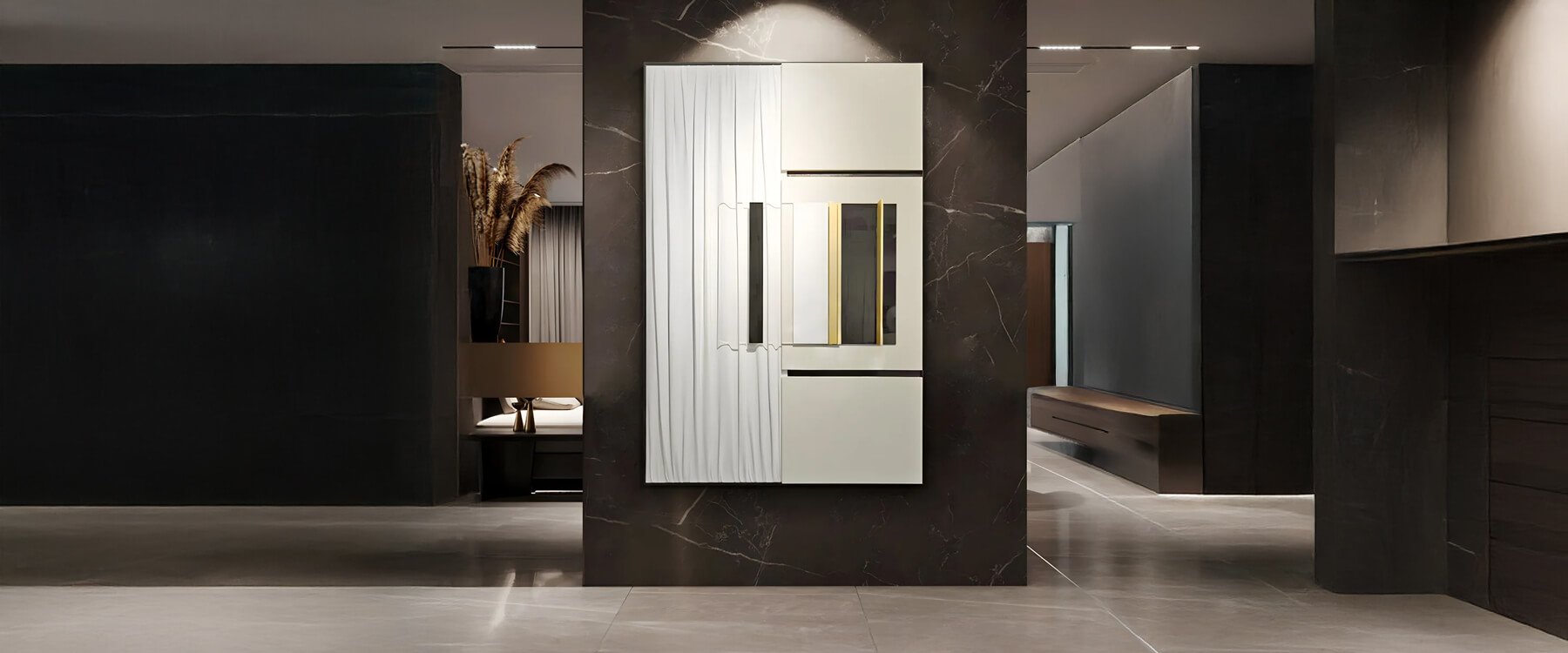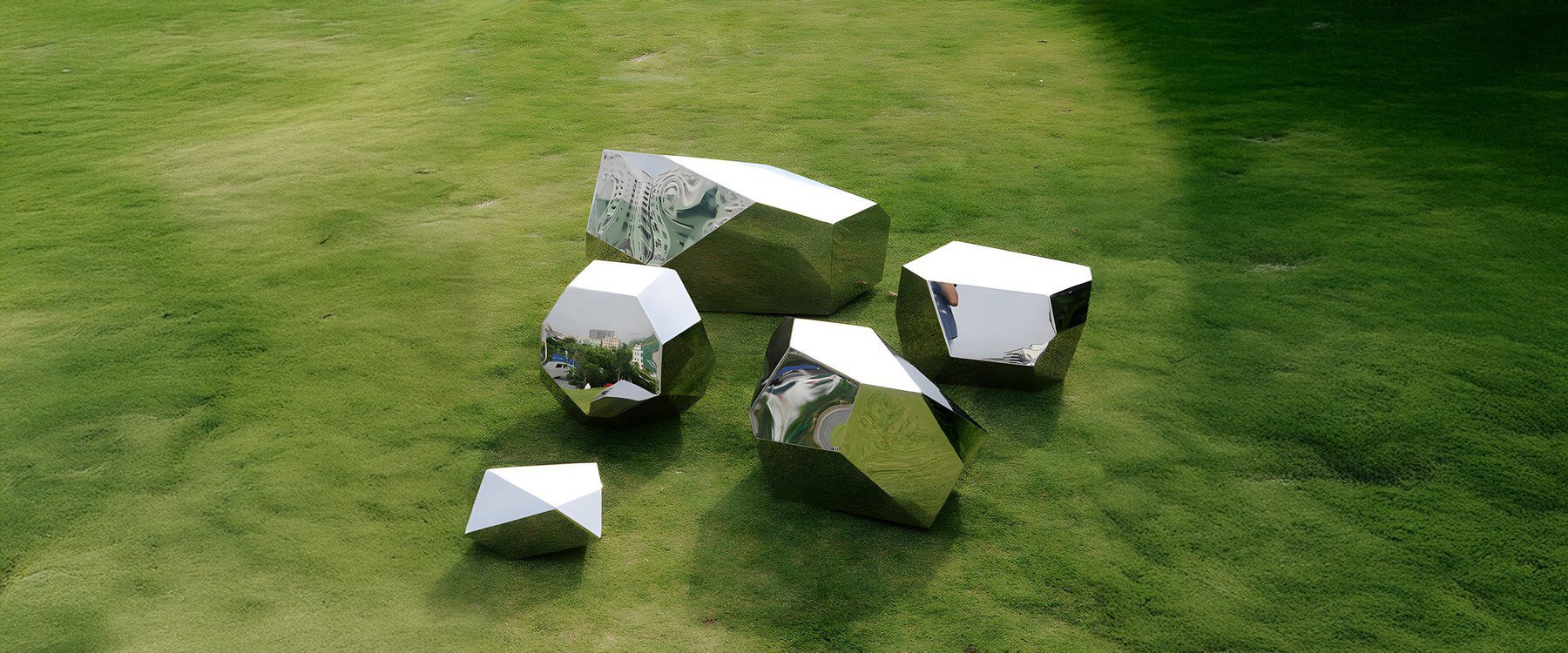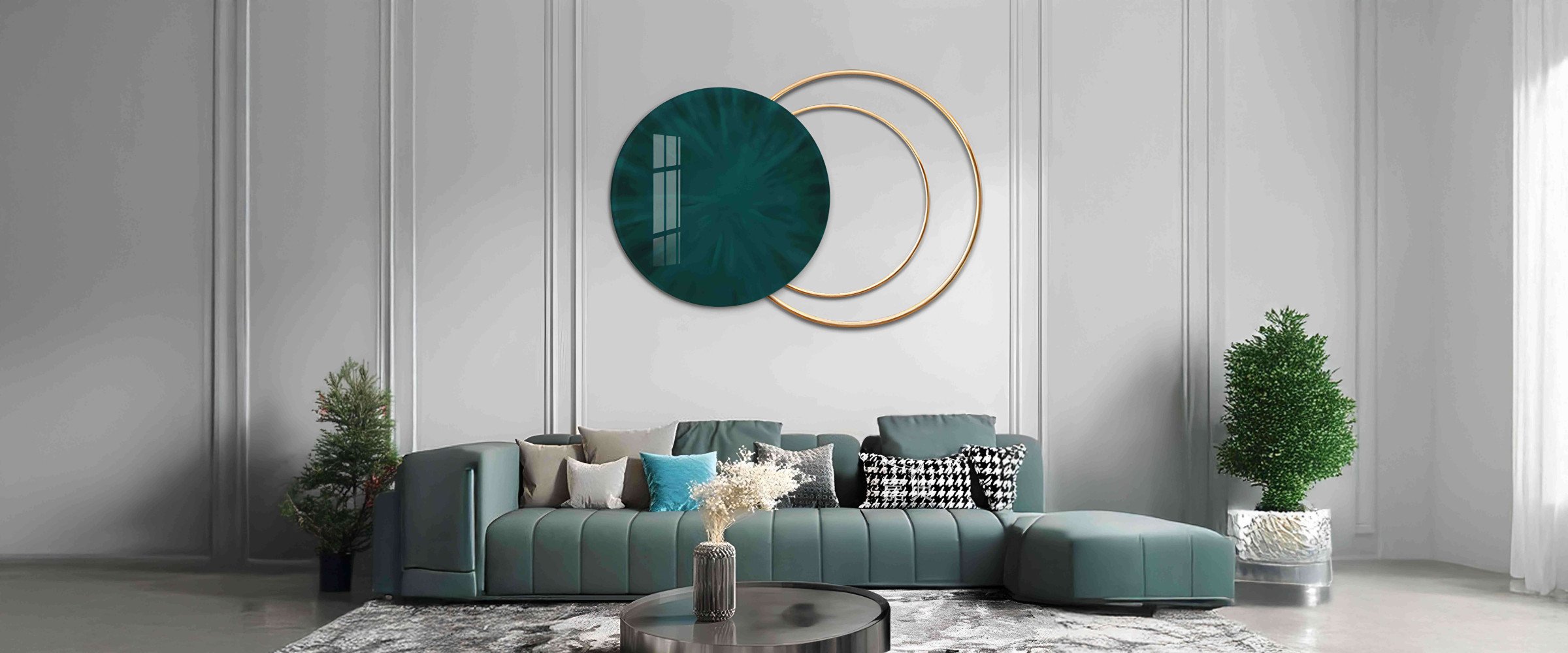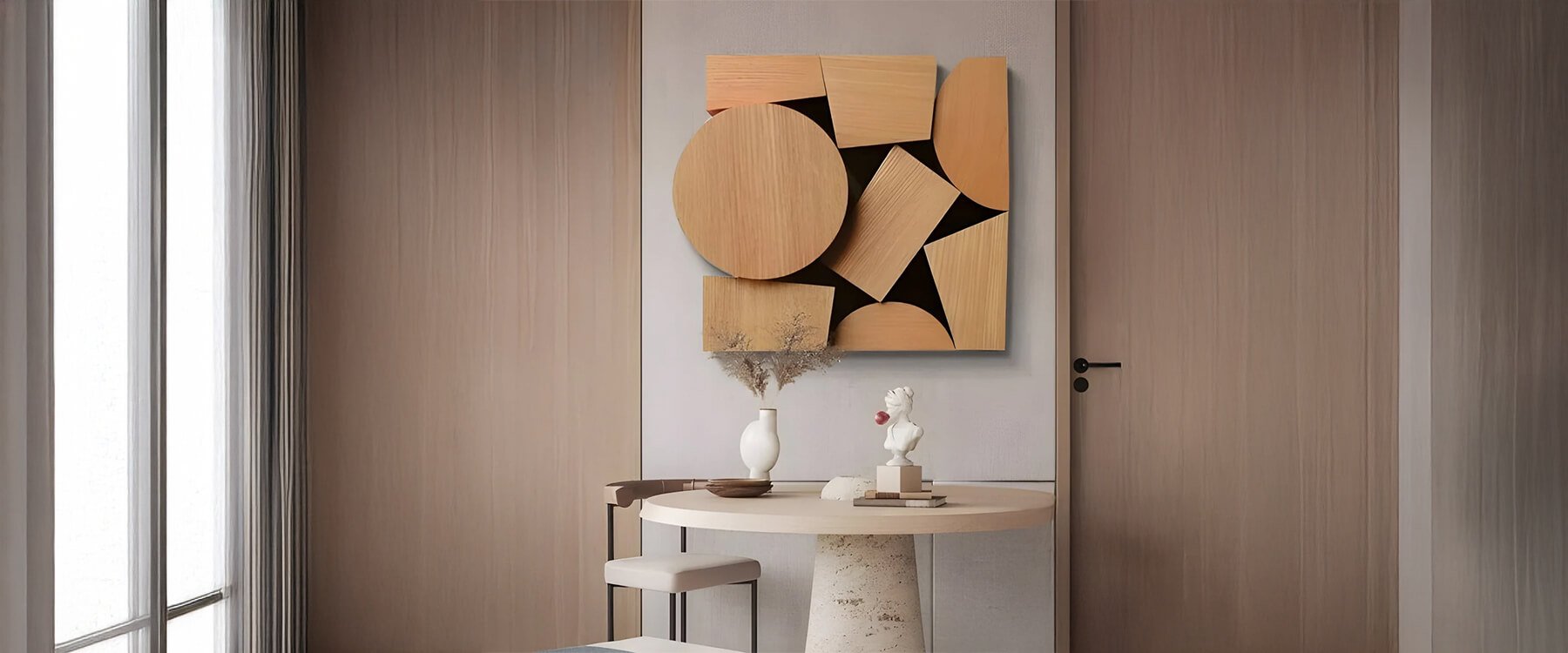Introduction
Home décor is constantly evolving, with each year introducing new styles, materials, and aesthetics that shape modern interiors. In 2025, one trend continues to dominate the world of wall art - geometric art. Known for its bold symmetry, structured lines, and dynamic compositions, geometric designs are taking center stage in contemporary décor, offering a modern, timeless, and visually striking appeal.
With the rise of minimalist and abstract aesthetics, geometric art has become a staple in both residential and commercial interiors. Used as a focal point in living room art, a calming influence in bedroom art, or a playful element in kids room art, geometric patterns are adaptable to different spaces and styles. From 3D art installations that add depth to a room, to wood art that brings warmth and texture, this design movement extends beyond simple prints, allowing homeowners to experiment with materials and styles.
The Rise of Geometric Art in 2025
In 2025, geometric art is more than just a decorative choice - it’s a statement of modern living. The appeal of geometric designs lies in their versatility, structure, and balance, making them a preferred choice for interior designers and homeowners alike.
Why Geometric Art Is More Popular Than Ever
- Timeless Appeal – Geometric patterns have been used in art for centuries, from ancient mosaics to modern abstract compositions. Their ability to blend tradition with contemporary design makes them a lasting favorite.
- Versatile Style – If your home features a Scandinavian, industrial, bohemian, or minimalist theme, geometric art integrates effortlessly into various décor styles.
- Visual Balance – The symmetry and clean lines in geometric designs bring a sense of order and harmony, making interiors feel well-structured yet artistic.
- Material Variety – Geometric patterns can be applied to wood art, canvas prints, metal sculptures, and even wallpaper, providing a range of textures and finishes to suit any space.
Why Geometric Art Is Perfect for Every Room
The beauty of geometric art lies in its ability to adapt to any space, from social areas like the living room and dining room to personal spaces such as the bedroom and kids' room. Here’s how this trend enhances different areas of the home:
Living Room Art: A Statement of Elegance
The living room is where homeowners make their boldest décor choices, making it an ideal space for geometric patterns. Through 3D art, oversized prints, or layered textures, geometric designs help create a striking focal point.
- Large-scale geometric prints provide a modern, eye-catching centerpiece.
- 3D geometric wall sculptures add depth and intrigue to the room.
- Metal or wood art balances contemporary and rustic aesthetics.
Bedroom Art: Creating a Calming Retreat
A bedroom should evoke a sense of tranquility, and geometric art can contribute to that feeling through soft color palettes and symmetrical patterns.
- Muted pastel tones in geometric prints help create a soothing ambiance.
- Wood art introduces a natural, organic element, perfect for cozy bedrooms.
- Minimalist geometric patterns bring structure without overwhelming the space.
Dining Room Art: Elevating the Dining Experience
A dining room is more than just a place to eat - it’s an area for social gatherings and shared experiences. Geometric art in this space enhances the elegance and sophistication of the setting.
- Bold geometric prints in rich hues create a dynamic backdrop for dining areas.
- Metallic and gold-accented geometric pieces add a touch of luxury and refinement.
- Layered wood art offers texture and warmth, making the dining space feel inviting.
Hallway Art: Transforming Transitional Spaces
Hallways are often neglected in home décor, yet they provide a perfect opportunity to experiment with geometric patterns.
- Long, linear geometric designs create a sense of movement, guiding the eye along the hallway.
- Black and white geometric art adds a sophisticated touch to narrow corridors.
- 3D wall panels introduce texture and dimension, making hallways more engaging.
Kids Room Art: Playful and Educational Designs
Geometric designs aren’t just stylish - they can also be fun and educational, making them a great addition to a kids’ room.
- Bright and colorful geometric shapes stimulate creativity and learning.
- 3D art installations introduce an interactive element to children’s rooms.
- Patterned wall decals or murals offer a playful and engaging environment.
Geometric Art Trends for 2025
As geometric art continues to dominate the world of interior décor, new trends are emerging that expand its creative potential. In 2025, homeowners and designers are seeking fresh ways to integrate geometric patterns into their spaces, moving beyond traditional prints to explore multi-dimensional designs, sustainable materials, and dynamic color palettes. This year’s trends emphasize depth, texture, and versatility, making geometric patterns an ever-evolving and adaptable décor choice.
3D Art & Layered Textures
One of the most exciting shifts in geometric art for 2025 is the move toward 3D compositions. Rather than relying solely on flat prints, artists and designers are experimenting with layered materials, raised surfaces, and sculptural elements to create tactile, visually dynamic pieces that transform walls into focal points.
Why 3D Art is Trending
- Adds Depth & Visual Interest – Unlike traditional 2D prints, 3D modular art brings a sculptural quality to walls, making them feel more interactive and engaging.
- Plays with Light & Shadow – Raised textures create interesting shadow effects, adding another layer of dimension to the artwork.
- Material Fusion – Many modern 3D art pieces combine different materials, such as metal, acrylic, glass, and wood art, for a sophisticated, multi-layered effect.
- Ideal for Large-Scale Designs – Oversized 3D geometric pieces work particularly well in living room art and dining room art, where they become bold statement pieces.
Popular 3D geometric art styles include multi-layered geometric cutouts, metal wall sculptures, and deep-relief wooden panels that bring movement and structure to any space.
Two Major Colour Trends for 2025
1. Soft Neutrals & Earthy Tones
Neutrals remain a top choice for minimalist interiors, with colours like beige, white, taupe, and grey dominating geometric designs. These tones are calming and adaptable, making them perfect for spaces like bedroom art and hallway art.
- Beige & Taupe Geometric Prints – Work well in Scandinavian and Japandi-style interiors.
- Gray & White Combinations – Maintain a crisp, modern aesthetic that suits living room art and office spaces.
- Muted Pastels – Softer shades like blush pink, sage green, and dusty blue are emerging as subtle alternatives to traditional neutrals.
2. High-Contrast & Bold Colours
For those who want their geometric art to stand out, 2025 is seeing a shift towards vibrant, statement-making hues. This trend embraces dynamic colour contrasts, adding energy and personality to interiors.
- Deep Emerald Greens & Navy Blues – Luxurious and sophisticated, ideal for dining room art and formal spaces.
- Burnt Orange & Terracotta – Adds warmth and character, complementing wood art beautifully.
- Black & Gold Geometric Accents – Creates an opulent, Art Deco-inspired aesthetic, perfect for modern and eclectic interiors.
- Geometric Neon Art – For a futuristic touch, neon geometric patterns are becoming increasingly popular, especially in contemporary lofts and kids room art.
The combination of neutral backdrops with bold geometric accents allows homeowners to customize their space with striking yet balanced aesthetics.
How to Choose the Right Geometric Art for Your Space
With so many styles, materials, and colour options available, selecting the right geometric wall art requires careful consideration. Here’s how to find the perfect piece for your home:
Key Considerations:
- Colour Palette: Choose geometric pieces that complement your existing décor. If your space is neutral, opt for bold colors to create contrast. For vibrant interiors, select monochrome or pastel geometric designs for balance.
- Material Choice: Explore different textures - wood art adds warmth, metal brings modernity, and canvas prints offer versatility.
- Size & Scale: Large geometric pieces make a statement in living rooms and dining rooms, while smaller prints suit bedrooms and hallways.
- Symmetry vs. Asymmetry: Symmetrical designs create a sense of order, while asymmetrical patterns introduce movement and creativity.
- Lighting Effects: Consider how natural and artificial light interact with the artwork, especially for 3D art and layered textures.
Conclusion
In 2025, geometric art is proving to be more than just a trend - it’s a versatile, timeless décor choice that enhances interiors with modern elegance. In living rooms, bedrooms, dining rooms, hallways, or kids' rooms, geometric patterns create stunning visual interest while maintaining harmony and balance.
From 3D art and bold statement pieces to wood art and layered textures, homeowners now have endless ways to incorporate geometric designs into their spaces. With its adaptability, aesthetic appeal, and evolving styles, it’s no surprise that geometric art remains the must-have trend for 2025 and beyond.












































































